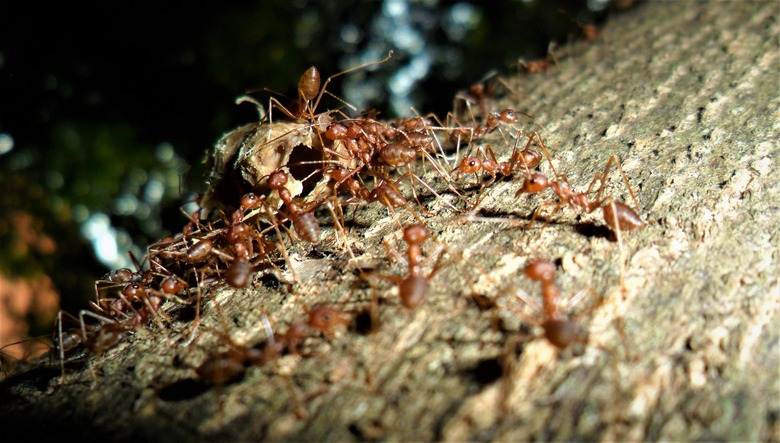What Causes Swarming Ants?
Swarms of ants are often observed by entomologists and laymen alike, particularly in the north central United States, where ants are most abundant. Swarms of winged ants are often seen emerging from established colonies, while groups of wingless worker ants can be spotted swarming around food sources. Entomologists have long been fascinated by the behavior of ants, and swarming behavior has been a top research interest.
Swarm Intelligence
Swarm Intelligence
Entomologists such as Stanford University biologist Deborah Gordon study a theory called swarm intelligence, which suggests that insects such as ants are governed by collective intelligence rather than individual intelligence. Swarm intelligence explains why colonies of ants construct ant highways, seamlessly delegate tasks throughout workers and respond quickly and effectively to encroaching enemy ants, while individual ants are nearly incapable of solving a simple navigational puzzle when isolated from other ants.
Hunting for Food
Hunting for Food
One primary reason why ants swarm is to collect food for the colony. Swarm intelligence is highly beneficial to insects like ants for food collection for many reasons. A swarm of ants can collectively find the shortest, easiest path to the best food source and coordinate foraging efforts. An ant colony can also make collective decisions about how many ants should be sent out on foraging missions each day, especially taking into account such considerations as known food sources, bounty of food needed and amount of food remaining in the colony. Thus, swarm intelligence can make food foraging extremely efficient.
Mating
Mating
Another primary reason for ant swarming is mating. Worker ants, which comprise the majority of the colony, are sterile and only perform manual labor. Winged ants, both male and female, are sexually mature. At certain times throughout the year, typically early spring and late summer, winged ants leave the colonies and form mating swarms. Ants often swarm over prominent landscapes, such as large trees or house chimneys. This phenomenon is known as "hilltopping."
Swarming Indoors
Swarming Indoors
An indoor ant swarm is a sign of an established indoor colony. Ants rarely move indoors from outside colonies in the absence of an indoor colony. Carpenter ants and pharaoh ants are two species that commonly establish indoor colonies. Other species of ants such as field ants typically form colonies near building foundations and may accidentally swarm indoors through cracks in the foundations or even chimneys.
Cite This Article
MLA
Black, Ashley. "What Causes Swarming Ants?" sciencing.com, https://www.sciencing.com/causes-swarming-ants-8451046/. 22 November 2019.
APA
Black, Ashley. (2019, November 22). What Causes Swarming Ants?. sciencing.com. Retrieved from https://www.sciencing.com/causes-swarming-ants-8451046/
Chicago
Black, Ashley. What Causes Swarming Ants? last modified March 24, 2022. https://www.sciencing.com/causes-swarming-ants-8451046/
